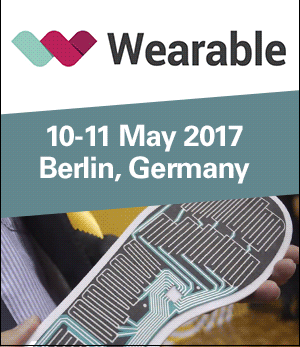

Dr. David Hinks, dean of NCSU's College of Textiles, welcomes leaders from international partners. (L-R) Chris Carr, University of Leeds; Kousaka Ohkawa, Shinshu University; Hink; and Calvin Wong, Hong Kong Polytechnic University.

Amanda Myers of N.C. State

Jessica Rickman, University of Leeds

Dr. David Hinks, dean of NCSU's College of Textiles, welcomes leaders from international partners. (L-R) Chris Carr, University of Leeds; Kousaka Ohkawa, Shinshu University; Hink; and Calvin Wong, Hong Kong Polytechnic University.
N.C. State’s College of Textiles hosts
Textile Summit pulls in global textile researchers
Posted April 5, 2017
By Kilara Le
RALEGH, N.C. – Textile, apparel and materials professors and graduate students from four global universities recently presented their research projects at the 2017 Textile Summit.
The event was hosted by North Carolina State University’s College of Textiles here and included partner universities – Hong Kong Polytechnic University, Shinshu University and University of Leeds, all of whom have programs that focus on textiles.
Presentations covered a wide range of topics from chemical reactions and composite materials to body scanning, clothing recycling as well as nano-materials and e-textiles and blood spot absorption into different fabric structures.
Dr. David Hinks, dean of the N.C. State College of Textiles, kicked off the summit with an overview of some of the focuses of the College and how it is preparing students for the future, citing the fact that 70 percent of all U.S. textiles employment is still in the Southeastern states. He explained its focus on and the importance of STEAM (Science, Technology, Engineering, Arts and Mathematics) in all of their programs, including fashion.
Professor Calvin Wong of The Hong Kong Polytechnic University highlighted that it is the only Hong Kong University to offer fashion and textiles, providing in-depth materials education as well as studies on human applications. His colleague, Sicily Ho, spoke about the university’s mission to attract the best and brightest graduate students to the university with generous, government-supported financial aid packages.
Professor Kousaku Ohkawa of Shinshu University described its range of programs from pure textiles and chemistry to mechanics, robotics and applied biology that drive their students and staff to industry innovations.
University of Leeds Professor Chris Carr spoke to its mission to produce “added-value innovators” and the skills shortage in manufacturing and technology in the U.K. that’s needed for reshoring the textiles industry.
Materials presentations
As there were two sessions running in parallel, there were points that it was difficult to choose which one to attend. At each of the partner universities, there is a lot of thought-provoking research going on involving textiles as well as practical application of materials and systems.
On the materials side of the schedule, presentations ranged from medical implant-focused research to fibers and structures for wearable tech. Hong Hu of The Hong Kong Polytechnic University spoke about textile structures with a negative Poisson’s Ratio, or structures that, for example, expand in the X direction when stretched in the Y direction, versus expanding in the Y direction when stretched in the Y direction which is typical of most materials. Some applications of these are special shapes to curve around parts of the body for easier garment construction and higher protective capabilities as a negative ratio typically imbues higher energy absorption abilities to the material.
Jessica Rickman, a graduate student at University of Leeds, presented her research surrounding the creation of more stable collagen fibers and structures for implantation into or onto the human body. She is focusing on wet spun fibers that are cross-linked by UV light activation, in an attempt to preserve as much of the structural integrity of the fibers as possible.
Some of the nonwovens research going on at N.C. State was presented by Dr. Behnam Pourdeyhimi, associate dean for Industry Research and Extension, William A. Klopman Distinguished Professor, and executive director of The Nonwovens Institute on campus. He suggested to the audience that using bi-component materials is often the best solution and that there are many different processes to explore for creating new fibers and structures with them and from them.
Muzamil Khatri, a graduate student at Shinshu University, spoke about his research to dye cellulosic nanofibers using ultrasonic-assisted treatments. In this research, they are able to more quickly dye the nano-fibers and also convert the fibers from cellulose acetate faster using this same type of ultrasonic method.
Hiroaki Yoshida of Shinshu University questioned whether we need to use polymers to create fibrous chains and presented his research into electrospinning small molecules to make nonwoven materials. He is especially interested in creating super hydrophobic materials by using this method.
Wearable tech
There were a number of wearable tech-related presentations that covered human energy harvesting capturing to conductive fiber research. N.C. State graduate student Amanda Myers presented research on human-based energy harvesting for self-powered sensors to be used with medical devices. They’ve been using thermal varieties of these types of sensors that work by capturing the body heat between a human body and the wearer’s clothing.
Her fellow graduate student and Assist lab researcher Raj Bhakta spoke about his involvement in research onto printing electronic inks onto flexible materials for electrocardiogram sensors. For printing circuits, they are using a printer that operates commercially for printing circuit boards in the automotive industry and then using heat lamination techniques to apply these to fabrics.
Dr. Minyoung Suh of N.C. State presented her e-textiles research, which focuses on printing silver ink onto textiles to create antennas. She also spoke about the potential of interference from the textile substrate itself.
Dr. Zijan Zheng of Hong Kong Polytechnic University presented its research lab’s flexible textile-based battery built on a layer of nickel coated-cotton fabric with a reduction of carbon and graphene molecules deposited onto it. He also showed a flexible waterproof supercapacitor that they’ve been developing.
Another area of research using graphene was a graphene-coated elastomeric yarn presented by Tao Hua also of Hong Kong Polytechnic University. The elastomer is coated with PVA and submerged into graphene dispersion. Under a scanning electron microscope, when the yarn is stretched, the grapheme coating develops cracks and the electrical resistance increases.
Along the lines of wearable tech was a presentation from Dr. Andre West of N.C. State about their recently licensed line of non-chemical mosquito-repelling garments. The tech part of this is in the technical construction of the fabric versus the incorporation of electronics or special finishes. With the widespread threat of the mosquito-spread Zika virus, the need for protective clothing is increasing, especially among vulnerable populations, such as pregnant women.
Their team has created various fabric constructions and clothing system designs that block the proboscis (the needle-like blood sucking part of the mosquito) from penetrating through the layer of clothing.
Human comfort, recycling and more
There were a number of presentations that related to human comfort and materials, enabling improved living or comfort. Atsushi Tsukahara of Shinshu University presented a wearable robotic system that is based on synchronization control. Its Curara system doesn’t have an exoskeleton and uses interactive torque in power units that are fixed to the wearer’s joints that aid with movement in persons who experience restricted motion.
Bipin Kumar of Hong Kong Polytechnic showed his research surrounding stress memory textiles that can be relaxed and easily put on by a wearer. Once in place, the textiles can be heated to shrink and provide compression in the area they are applied. Some potential applications for this are garments for venous medical conditions where bandages or stockings are commonly used.
In the first part of Minyoung Suh’s presentation, she discussed her post-doctoral research focused on methodology to better measure breast density to create more comfortable and customized women’s clothing. Dr. Cindy Istook, Anne Porterfield and West – all of N.C. State – presented their research surrounding 3D body scanning to create more accurate clothing sizing and enable more customized garments.
Steven Michielsen of N.C. State discussed his research surrounding interactions of textiles and liquids. His presentation included examining bloodstains and blood absorption into different yarns and fabric constructions.
Jeffery Joines of N.C. State discussed research into consumer recycling behavior of apparel and the motivating factors that cause people to resell, donate or throw away their old clothing. Their research found that access to clothing recycling facilities and convenience are the major factors in enabling people to recycle more textile materials.
Traci Lamar, also of N.C. State, showed the ability of lasers to etch areas of textiles to create dynamic surface effects and cutouts.
So for those of you who think of textiles as a linear subject – the ins and outs of all the elements that surround the industry – can make the boundary lines a bit fuzzy. As cross-functionality in electronic-textiles, drug-delivery textiles and digital modeling of both clothing and fabric structures becomes more explored and utilized in the industry, the already broad mix of textile-related topics continues to expand.












